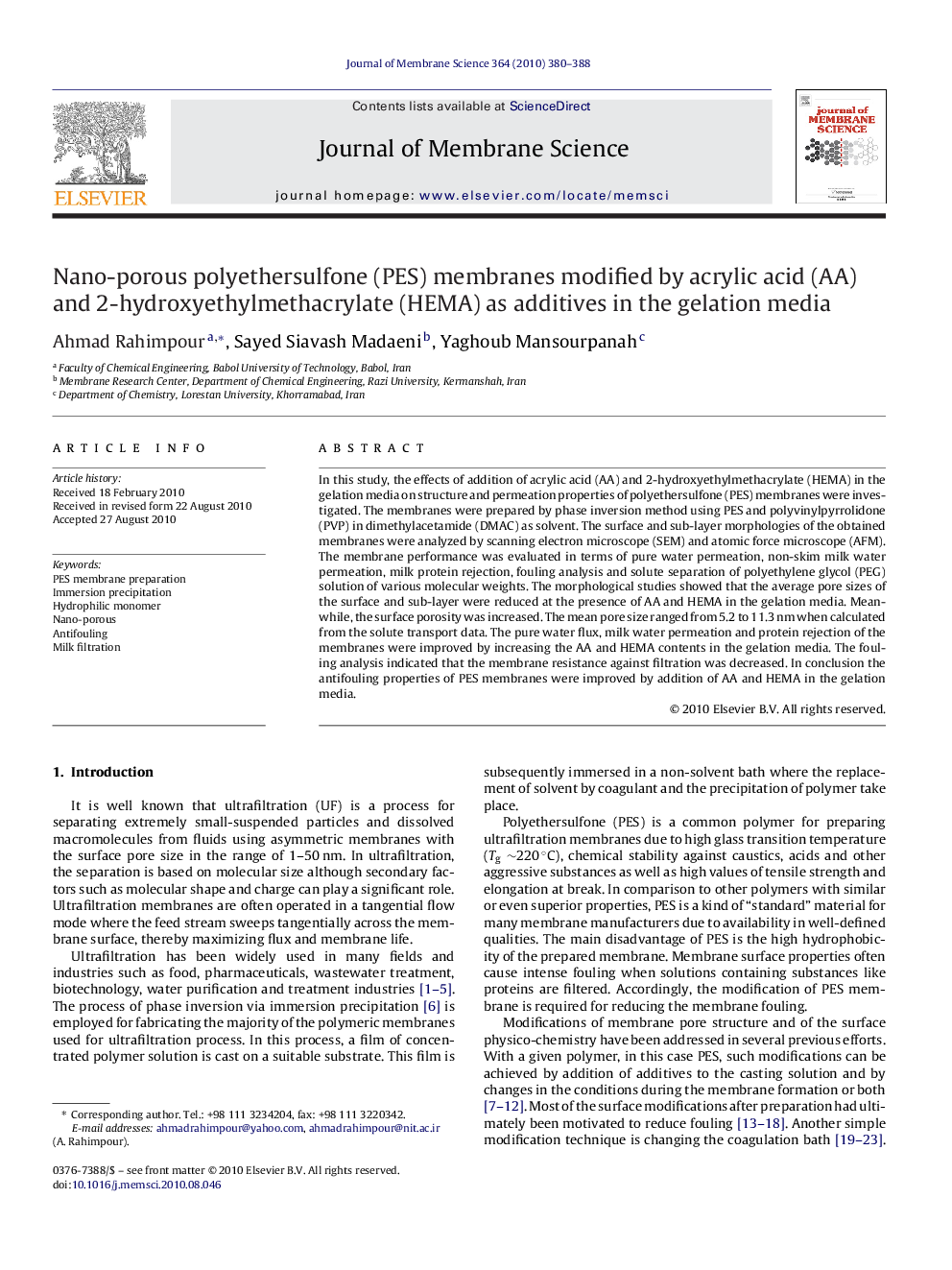| Article ID | Journal | Published Year | Pages | File Type |
|---|---|---|---|---|
| 636175 | Journal of Membrane Science | 2010 | 9 Pages |
In this study, the effects of addition of acrylic acid (AA) and 2-hydroxyethylmethacrylate (HEMA) in the gelation media on structure and permeation properties of polyethersulfone (PES) membranes were investigated. The membranes were prepared by phase inversion method using PES and polyvinylpyrrolidone (PVP) in dimethylacetamide (DMAC) as solvent. The surface and sub-layer morphologies of the obtained membranes were analyzed by scanning electron microscope (SEM) and atomic force microscope (AFM). The membrane performance was evaluated in terms of pure water permeation, non-skim milk water permeation, milk protein rejection, fouling analysis and solute separation of polyethylene glycol (PEG) solution of various molecular weights. The morphological studies showed that the average pore sizes of the surface and sub-layer were reduced at the presence of AA and HEMA in the gelation media. Meanwhile, the surface porosity was increased. The mean pore size ranged from 5.2 to 11.3 nm when calculated from the solute transport data. The pure water flux, milk water permeation and protein rejection of the membranes were improved by increasing the AA and HEMA contents in the gelation media. The fouling analysis indicated that the membrane resistance against filtration was decreased. In conclusion the antifouling properties of PES membranes were improved by addition of AA and HEMA in the gelation media.
Research highlights▶ Nano-porous hydrophilic PES membrane prepared at presence of acrylic acid (AA) and 2-hydroxyethylmethacrylate (HEMA) as additive in gelation media. ▶ High milk water permeation and high protein rejection. ▶ Membranes with high antifouling properties.
